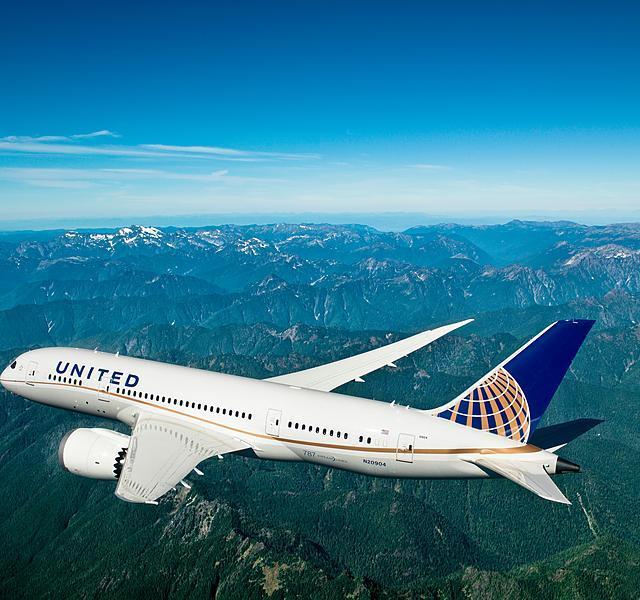Flying Together United UAL
Flying Together: United Airlines’ Strategy for Expanding Global Routes
As one of the largest airlines in the world, United Airlines has consistently sought to expand its global footprint. The airline's strategic approach to increasing international routes highlights its commitment to meeting passenger demand and strengthening its competitive edge. Let’s delve into how ual flying together United Airlines is evolving its global network and the factors driving its strategy.
Understanding the Need for Global Route Expansion
The demand for international travel has grown steadily over the years. Leisure travelers seek exotic destinations, while businesses rely on seamless connectivity to maintain global operations. United Airlines recognizes these trends and is positioning itself as a leader in meeting these needs.
Expanding global routes isn't just about adding destinations; it's about creating connections that serve both personal and business travel. United's strategic investments in fleet expansion, partnerships, and technology showcase its long-term vision for a more interconnected world.
Catering to Passenger Demand
United Airlines conducts extensive market research to identify emerging travel hotspots and underserved destinations. By monitoring passenger trends and analyzing booking data, the airline can determine where demand is growing. For example, destinations in Asia and Africa are increasingly popular among leisure travelers, while traditional hubs in Europe and South America remain vital for business travelers.
Meeting passenger demand also involves offering convenient schedules, competitive pricing, and seamless connections. United's frequent flyer program, MileagePlus, further incentivizes customers to choose United for their international travel needs.

Strategic Alliances and Partnerships
One of United Airlines' most effective tools for expanding its global network is its partnerships. As a member of the Star Alliance, United collaborates with 25 other airlines to provide passengers with access to over 1,300 destinations worldwide. This partnership allows United to extend its reach without the need to operate direct flights to every destination.
The Role of Codeshare Agreements
Codeshare agreements are another critical aspect of United's strategy. By partnering with other airlines, United can offer its passengers seamless connections to destinations that might otherwise be difficult to access. For instance, United has agreements with Lufthansa, ANA, and Air India, enabling passengers to travel to a wider range of cities across Europe and Asia with minimal inconvenience.
Investing in Fleet and Technology
To support its global expansion, United Airlines has made significant investments in its fleet and technology. The airline has prioritized fuel-efficient, long-haul aircraft like the Boeing 787 Dreamliner and Airbus A350, which are ideal for international routes. These aircraft not only reduce operating costs but also enhance passenger comfort with modern amenities and spacious seating.
Enhancing Passenger Experience
United's investments go beyond just aircraft. The airline is focused on improving the overall travel experience through innovative technology. From mobile apps that streamline check-ins to in-flight Wi-Fi and entertainment systems, United ensures passengers stay connected and comfortable throughout their journey. These enhancements are particularly important for long-haul flights, where customer satisfaction can make or break loyalty.
Sustainability as a Key Factor
In an era where environmental concerns are at the forefront, United Airlines has made sustainability a cornerstone of its global strategy. The airline aims to achieve net-zero greenhouse gas emissions by 2050 and has invested in sustainable aviation fuel (SAF) to reduce its carbon footprint.
Adapting to Regulatory Requirements
Expanding into new markets often involves navigating complex regulatory landscapes. United works closely with government authorities to meet local aviation requirements and ensure compliance with environmental standards. This proactive approach allows the airline to operate smoothly in diverse regions while maintaining its commitment to sustainability.
Targeting Key Global Markets
United Airlines' route expansion strategy is heavily influenced by the potential of key global markets.
Strengthening Presence in Asia
Asia is a top priority for United, given its economic growth and increasing demand for air travel. The airline has launched or increased service to cities like Tokyo, Shanghai, and Singapore, catering to both leisure and business travelers.
Tapping Into Emerging Markets
In addition to established destinations, United is focusing on emerging markets in Africa and South America. These regions offer significant growth opportunities as their middle-class populations expand and international tourism flourishes.
Maintaining Leadership in Transatlantic Routes
The transatlantic market remains highly competitive, with routes connecting North America and Europe being some of the most profitable. United has bolstered its presence in this market by adding flights to key European cities and offering premium services for business travelers.
Challenges and Future Outlook
While United Airlines has made impressive strides in expanding its global network, the journey is not without challenges. Rising fuel costs, geopolitical tensions, and fluctuating passenger demand can impact the feasibility of certain routes. However, United's proactive approach to market research and its adaptability position the airline well for future growth.
What Lies Ahead
Looking ahead, United Airlines is likely to continue leveraging technology, partnerships, and sustainability initiatives to strengthen its global presence. The airline's focus on meeting passenger needs while maintaining operational efficiency ensures it remains a key player in the international aviation market.
Conclusion
United Airlines’ strategy for expanding global routes is a testament to its forward-thinking approach in a highly competitive industry. By catering to passenger demand, forging strategic partnerships, and investing in advanced technology and sustainability, the airline is well-positioned to thrive in the global travel market. As the world becomes increasingly interconnected, United’s efforts to "fly together" will undoubtedly contribute to shaping the future of international aviation.